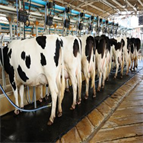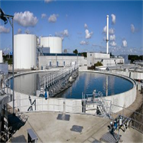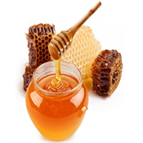Find methods for your needs
Refine by Feature
Displaying 1-5 of 7 results for Tag: Antimicrobial
AB803: Automated Solid Phase Extraction (SPE) of Triclosan in River Water
Instrument Type: Automated Sample PrepIn recent years, there has been some concern about the levels of triclosan found in drinking water. Triclosan is an antibacterial compound used in a wide range of detergents, soaps, creams, and kitchen sprays. Such widespread use of triclosan requires the need to screen drinking water for the presence of this compound.
AN1081: Automated Solid-Phase Extraction of Triclosan in Tap Water Using Hydrophilic Reversed-Phase Cartridges and HPLC with UV Detection
Instrument Type: HPLCIn this application note, triclosan-contaminated samples of tap water were simulated by adding known amounts of triclosan-containing liquid hand soap to Sunnyvale tap water. The Dionex AutoTrace 280 instrument along with the high-surface-area, hydrophilic, reversed-phase cartridges were used to concentrate triclosan. The contents of the cartridge eluent were then separated on a reversed phase column using HPLC with UV detection.
Simple and Rapid Analysis of Chloramphenicol in Milk by LC-MS/MS
Instrument Type: LCMSMSChloramphenicol (CAP) is a broad-spectrum antibiotic with historical veterinary uses in all major food-producing animals. It has serious side effects on humans that may cause aplastic anemia, and suspected carcinogen effect. Though banned for use in all food-producing animals by the EU, USA and Canada, residues of CAP at unacceptable levels continue to be found in food imports. We describe a simple sample preparation procedure followed by a high-speed LC separation and detection by a triple quadrupole MS operated in SRM mode and validation per European Commission Decision 2002/657/EC.
Quantitative and Semi-Quantitative Determination of PPCPs and Their By-Products in Wastewater by Orbitrap MS
Instrument Type: LCMSPharmaceuticals and personal care products (PPCPs) and endocrine disrupting chemicals (EDCs) detected in surface and drinking waters, as well as in treated wastewater. They are an issue of increasing international attention due to potential environmental impacts. We developed an analytical method capable of determining PPCPs and their by-products in wastewater treatment plant (WWTP) samples. This workflow was applied in a survey of 35 permeate samples obtained from a pilot anaerobic membrane bioreactor (AnMBR).
Measurement of Chloramphenicol in Honey Using Automated Sample Preparation with LC-MS/MS
Instrument Type: LCMSMSChloramphenicol (CAP) (Figure 1) is a bacteriostatic antimicrobial previously used in veterinary medicine. CAP has been found to be potentially carcinogenic, which makes it an unacceptable substance for use with any foodproducing animals, including honey bees. We describe a quick, automated sample preparation, LC-MS/MS method for chloramphenicol (CAP) in honey by negative ion heated electrospray ionization (H-ESI) using a deuterated internal standard (CAP-d5).





